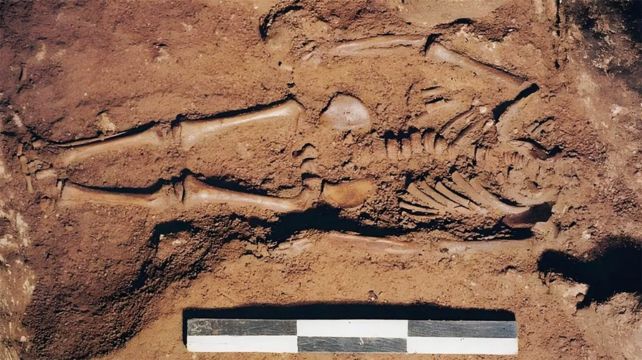https://static01.nyt.com/images/2023/06/04/multimedia/04india-train-01-pwkb/04india-train-01-pwkb-facebookJumbo.jpg
Teams worked hard on Sunday to quickly restore an important rail line in eastern India after the country’s worst train disaster in decades. The crushed train cars were removed, and the jumbled tracks were straightened and rejoined.
Families of the victims were still struggling to reach the site of the wreck near the town of Balasore in Odisha State. Investigators are looking into the cause of the crash. While they are checking the malfunction of an electronic signaling system, they say they are not ruling out human error — or even sabotage.
As movement on the restored tracks began in both directions by late Sunday night, officials arranged a special train to carry the relatives of the victims from the city of Kolkata in the neighboring state of West Bengal to Odisha. And the government of Odisha announced free bus service on the disrupted train route.
“Most of these people are poor, and it may take them days to arrive,” said Rahul Kumar, a doctor at the main hospital in Bhubaneswar, the capital of Odisha, who was helping with the rescue and relief efforts.
Information about the cause of the incident has been limited. What is known so far is that a high-speed passenger train collided with a parked freight train around 7 p.m. on Friday and derailed. Some of its cars slammed into another passenger train, resulting in a sprawling scene of twisted metal, crushed limbs and splattered blood.
India’s railway network is one of the busiest in the world, transporting eight billion passengers a year. The tragedy occurred as Prime Minister Narendra Modi’s government has made modernizing infrastructure a campaign priority for his third term. Although Mr. Modi’s government has touted its investments in expanding infrastructure, a recent official audit revealed a significant shortfall in safety spending for more than 13,000 trains while overall spending increased, including for a fleet of new semi-high-speed trains.
Railway authorities have asked India’s premier investigation agency, the Central Bureau of Investigation, to take over the inquiry. India’s railway minister, Ashwini Vaishnaw, told reporters that officials were investigating whether the electronic signal system intended to prevent accidents had not functioned, but was open to the possibility of sabotage. Anyone found responsible will be punished, officials said.
Railway officials privately noted that the high-profile investigation launched by political leaders was looking for scapegoats to deflect from the fact that ensuring safety on India’s vast and underfunded railways falls short. For the families searching for their loved ones’ bodies at the scene, the process was slow and traumatic. Only 88 bodies out of the 275 killed in the crash had been returned to their families, while more than 1,100 people were injured.
Odisha’s government moved about 100 bodies to the morgue of the main hospital in Bhubaneswar. As the mortuary filled up, the state government published online photos of the dead to help identify the victims. A dozen bodies were laid out in the hallway of a small school a few hundred yards from the crash site, while others were kept in a business park in Balasore on top of large ice blocks covered with plastic sheets. But the ice was melting fast in the heat. Families who made it to the park first looked at the faces of victims on a laptop. Then, if they saw any resemblance to a loved one, they moved close.
The passengers onboard the Coromandel Express, one of the trains, included two friends, Debpriya Pramanik and Budhadeb Das. They were returning from their village of Baliara to their construction jobs in the southern city of Vijayawada and had persuaded a third friend, Shamik Dutta, to join them. While Mr. Dutta had hardly left Baliara before, his two friends convinced him that the money they could make in Vijayawada was worth it, and he acquiesced.
On the Coromandel Express, the three friends stood by the door of a crowded compartment where people were tightly packed. Just before 7 p.m. on Friday, Mr. Dutta left his bags with his friends, saying he needed to use the restroom. It was the last time they saw him alive.
Interviews with railway officials and press briefings by other officials provided insight into the events leading up to the accident. The Coromandel Express had left Kolkata with around 1,250 passengers and was passing the Bahanaga Bazar station in Balas














